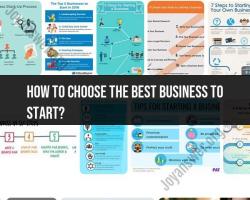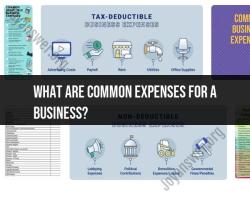What is advanced business writing?
Advanced business writing refers to the use of sophisticated and refined writing techniques in a business context. It goes beyond basic communication skills and involves the application of more nuanced and strategic approaches to convey information, persuade, and build professional relationships. Advanced business writing is crucial for professionals who want to elevate their communication skills and make a significant impact in the corporate world.
Here are some key elements and techniques associated with advanced business writing:
Audience Analysis: Understanding your audience is critical in advanced business writing. You need to tailor your communication style, tone, and level of detail based on the knowledge, interests, and expectations of your readers.
Strategic Organization: Structuring your writing in a logical and strategic manner is essential. This involves planning and organizing your content to effectively convey your message, whether it's a proposal, report, or email.
Clarity and Precision: Advanced business writing demands clarity and precision in language. Avoid unnecessary jargon and use language that is clear, concise, and easily understood by your target audience.
Persuasive Techniques: Mastering persuasive writing is a key aspect of advanced business writing. This includes using rhetorical devices, presenting compelling arguments, and addressing potential objections to influence your readers.
Professional Tone: Maintaining a professional tone is crucial. While it's essential to be clear and direct, it's equally important to convey a sense of professionalism and respect in your communication.
Effective Use of Data: Advanced business writing often involves presenting and interpreting data. Learn to use data effectively, including charts, graphs, and other visual aids, to support your arguments and enhance understanding.
Adaptability: Being adaptable in your writing style is crucial. Different situations may require different tones and approaches, whether you're writing a formal report, a persuasive pitch, or a casual email.
Revision and Editing: Advanced business writers understand the importance of revising and editing their work. This includes checking for grammar and punctuation, as well as refining the clarity and coherence of the message.
Cultural Sensitivity: In a global business environment, being culturally sensitive in your writing is essential. Be aware of cultural nuances and adapt your communication style accordingly.
Emotional Intelligence: Advanced business writing may involve understanding and addressing the emotional aspects of communication. This includes being empathetic, managing tone effectively, and recognizing the emotional impact of your words.
By incorporating these advanced business writing techniques, professionals can enhance their ability to communicate effectively, build strong relationships, and achieve their business objectives. Continuous practice and refinement of these skills are key to mastering advanced business writing.
How does advanced business writing differ from basic business writing skills?
While both basic and advanced business writing aim to communicate effectively in professional settings, their skills and approaches differ significantly:
Basic Business Writing:
- Focus: Foundation in grammar, punctuation, clarity, and conciseness.
- Content: Covers common formats like emails, memos, and reports.
- Audience: General business audience with average business knowledge.
- Style: Straightforward, direct, and easy to understand.
- Goal: Deliver basic information accurately and efficiently.
Advanced Business Writing:
- Focus: Tailoring communication to specific audiences and goals.
- Content: Includes complex documents like proposals, white papers, and executive summaries.
- Audience: Varied audiences with diverse levels of expertise.
- Style: More nuanced, persuasive, and strategically crafted.
- Goal: Achieve specific objectives like winning a proposal, influencing decisions, or building relationships.
Here's a table summarizing the key differences:
| Feature | Basic Business Writing | Advanced Business Writing |
|---|---|---|
| Focus | Grammar, clarity, conciseness | Audience, goals, persuasion |
| Content | Common formats | Complex documents |
| Audience | General business audience | Diverse audiences with varying expertise |
| Style | Straightforward, direct | Nuanced, persuasive, strategic |
| Goal | Deliver basic information | Achieve specific objectives |
Additionally, advanced business writing skills involve:
- Critical thinking: Analyzing complex data and presenting it in a clear, compelling way.
- Research skills: Gathering and incorporating relevant information from various sources.
- Strong persuasion skills: Crafting impactful arguments and supporting them with evidence.
- Effective tone and style: Adjusting writing voice to suit different audiences and purposes.
- Design and formatting: Understanding how design elements enhance communication.
Mastering advanced business writing can elevate your professional communication, improve your effectiveness in achieving business goals, and boost your career prospects.
I hope this clarifies the differences between basic and advanced business writing! Let me know if you have any further questions.













